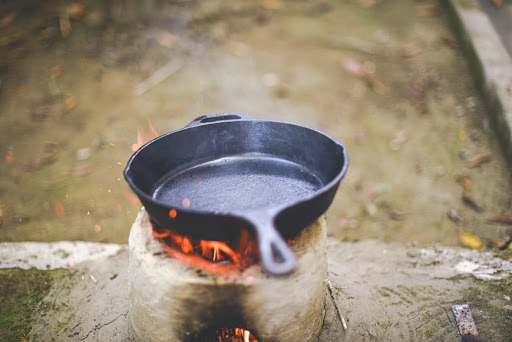In the day and age of the virtual economy it can be a mine-field trying to navigate what seems like should be some of the most simple purchases to make. Shampoo, for example, is a product that could have you digging through rabbit-holes for days on end without any context or guidance. This can be the case with kitchenware and cookware, too. Especially when it comes to first-time apartment renters or first-time home-owners. Finding the perfect cookware for your cooking and kitchen needs feels like it should be a breeze, unfortunately, it doesn’t take long to get stuck in the weeds of it all.
By understanding a few base-line things about the cookware industry and manufacturing, though, will help ease the decision-making process significantly. Knowing what to look out for when shopping for cookware will help you pick the best set for you and your individualized needs.shopping for cookware at imarku.net.
Table of Contents
What the Price Says About Stainless Steel
Stainless steel is wildly popular on the market when it comes to cookware options. Stainless steel cookware is common because of a few reasons. It fits with the modern aesthetic that many consumers are trying to bring into their kitchen, it’s typically very easy to maintain and clean, and because it can be designed to fit a wide variety of kitchen cookware needs and functions.
When it comes to stainless steel cookware, though, it’s important to understand a little bit about the manufacturing process. Stainless steel is a poor heat conductor. This means that by itself, it makes for really ineffective cookware. However, this is addressed in the manufacturing. By designing a layer with a different metal at the core of the stainless steel cookware, the burden of heat-conduction is taken off the shoulders of stainless steel.
The metal at the core of most stainless steel cookware is aluminum. That’s because it’s an effective heat conductor that offers strong heat retention and distribution, without putting too big of a dent in the consumer’s wallet. The other other metal of choice that manufacturers utilize is copper.
Copper is a stronger heat conductor but comes at a significantly steeper price-point than the aluminum alternative.
When Choosing Non-Stick
A non-stick pot and pan set is another option that rates well with a wide variety of consumer demographics. When non-stick technology first came onto the market it quickly garnered a bad reputation for itself. The main issue that consumers took with the original version of non-stick cookware was that it contained a potentially harmful chemical known as PFOA. PFOA is commonly referred to as Teflon. Understandably, consumers weren’t crazy about cookware that contained the same chemical as Teflon. This led to a wide variety of innovations in non-stick technology, however, bringing healthy and consumer-friendly non-stick options back into the competitive cookware marketplace.
Some non-stick technology is combined with stainless steel and hybrid cookware in order to optimize the cooking experience for any home-chef while other non-stick technology utilizes ceramic layering to achieve similar results.
Suggested Maintenance and Care
Although it may seem like an after-thought, suggested maintenance and care can be a big part of the purchase decision when it comes to cookware. As mentioned earlier, cast iron cookware is infamous for the amount of care and maintenance it requires to make it last a lifetime.
Meanwhile, stainless steel and hybrid pot and pan sets offer the user a combination of high-quality cooking experiences and low maintenance care. Many modern day cookware options are even dishwasher safe, taking one more thing off your to-do list. That being said, it’s worth noting that many still suggest hand washing and hand-drying in order to extend the lifespan.
When it comes to copper cookware and stainless steel cookware specifically, the occasional polishing can help maintain the shine also. While copper pots and pans require polishing more often in order to keep their original coloring, stainless steel cookware only requires it on occasion to bring back that brand-new off-the-shelf look.
Cooking Limitations or Specified Use
Finally, cooking limitations are extremely important to consider when purchasing pots and pans, or any kitchenware for that matter. When it comes to copper cookware, whether it’s pure or hybrid with stainless steel, it’s typically suggested that the chef use nothing hotter than med-heat. This is because of the fact that copper is such an effective heat conductor that using too high of heat can cause issues.
Additionally, you should pay attention to the temperature maximums for which cookware is designed to withstand. Most modern day cookware can withstand oven temperatures up to 500 degrees fahrenheit, but that should be confirmed with the specific cookware set.
A Few Final Words
Finding the perfect cookware set for your personalized kitchen and cooking needs is made a lot easier when you know what you’re looking to get from your pots and pans. Understanding the main differences in the materials and manufacturing of different types of cookware can help guide you in buying your dream set.
















